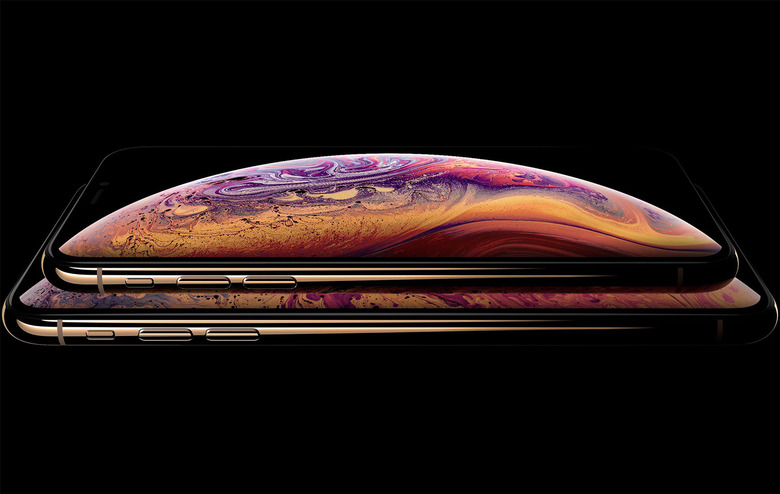iPhone XS Vs. iPhone X: A Complete List Of Everything New In Apple's Next-Gen iPhone
After a year of leaks and rumors followed by a week of pre-orders, Apple's new iPhone XS and iPhone XS Max are finally here. Two-thirds of Apple's 2018 iPhone lineup hits store shelves on Friday, and Apple fans around the world are giddy with anticipation. Millions upon millions of people will take delivery of a new iPhone this weekend. In fact, Apple will sell more next-generation iPhones over the course of a single weekend than most other current smartphone models will sell over the course of their lifespan. Some analysts think iPhone sales might climb as high as they were back in 2014 when Apple released the iPhone 6 and 6 Plus.
The iPhone XS Max certainly seems like the more eagerly anticipated new iPhone model this year, and it's easy to see why. The iPhone XS Max can sort of be compared to the iPhone 6 Plus; the wait isn't quite as long, but people have been clamoring for a device that looks like the iPhone X but has a significantly larger display. After all, the diagonal measurement on the iPhone X's screen might be 5.8-inches, but the aspect ratio is so narrow that there's actually less surface area on the iPhone X than there is on Apple's Plus phones with a 5.5-inch screen.
Apple's iPhone XS might not have as much buzz around it than the iPhone XS Max, but it's obviously still going to be among the most popular new smartphones to launch this year. It also happens to be one of the smallest year-over-year upgrades Apple has ever released if you compare it to the iPhone X. The iPhone XS really isn't meant for iPhone X owners, of course, since Apple models its iPhones for people who upgrade every two years. Even still, it can't hurt to put together a thorough comparison of the iPhone XS and iPhone X, since so many people are arguing over whether or not it's a solid upgrade.
People seem to be caught up on the fact that the iPhone XS doesn't really have any standout new features compared to last year's iPhone X. In fact, it's the first "S" upgrade since the iPhone 3GS that doesn't. The iPhone 4s had Siri, the 5s had Touch ID, and the iPhone 6s had 3D Touch, for better or worse. Compared to the iPhone X, the iPhone XS is mainly a specs update.
We've already established that the phone isn't intended for iPhone X owners, but what will you get if you do decide to upgrade from an iPhone X to an iPhone XS? In this post, you'll find a complete list of every significant difference between last year's iPhone X and this year's iPhone XS.
iPhone XS vs. iPhone X
- Silver, Space Gray, and Gold color options vs. Silver and Space Gray
- 64GB, 256GB, and 512GB size options vs. 64GB and 256GB
- 4GB of RAM vs. 3GB of RAM
- Weight: 177 grams vs. 174 grams
- A12 Bionic chip with next-generation Neural Engine vs. A11 Bionic chip with Neural Engine
- Faster Face ID on iPhone XS
- Faster wireless charging on iPhone XS
- 60% more dynamic range on iPhone XS display
- IP68 dust- and water-resistance vs. IP67 dust- and water-resistance
- Portrait mode with advanced bokeh and Depth Control vs. Portrait Mode
- Smart HDR for photos vs. Auto HDR
- Extended dynamic range for video up to 30 fps on iPhone XS
- Stereo recording for video on iPhone XS
- Cinematic video stabilization for front-facing camera on iPhone XS
- 1080p HD video recording at 30 fps or 60 fps vs. only 30 fps for front-facing camera
- Gigabit-class LTE vs LTE Advanced
- NFC Express Cards with power reserve vs. no power reserve
- Dual SIM support with eSIM vs. single SIM support
- iPhone XS battery lasts up to 30 minutes longer than iPhone X
